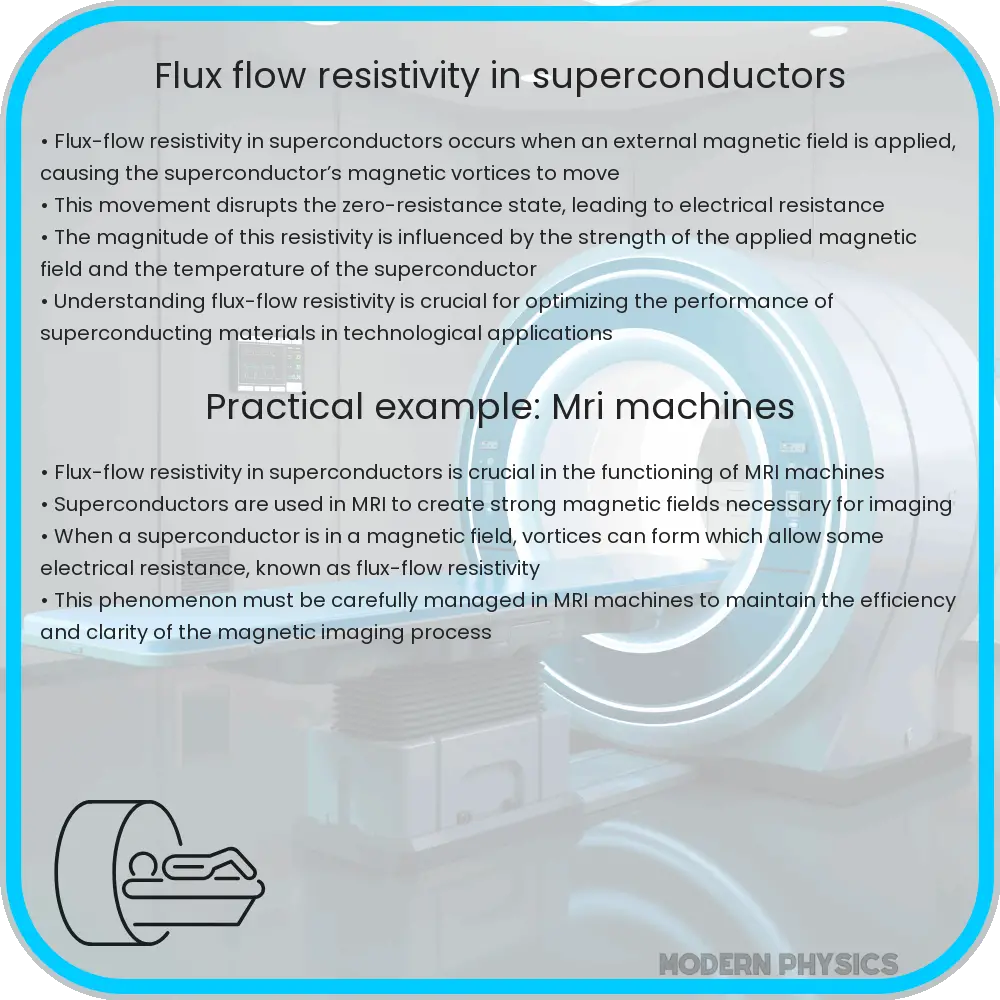Explore the dynamics of flux-flow resistivity in superconductors, its impact on efficiency, and strategies for optimization in this insightful article.

Understanding Flux-Flow Resistivity in Superconductors
The phenomenon of superconductivity, where materials conduct electricity with zero resistance, has been a subject of intense study in the field of condensed matter physics. Among the key areas of investigation is the concept of flux-flow resistivity in superconductors, which plays a crucial role in determining their efficiency and dynamics. This concept is essential for the practical application of superconducting materials in various technological domains, including magnetic resonance imaging (MRI), quantum computing, and power transmission.
Basics of Superconductivity and Flux Flow
Superconductors are materials that exhibit zero electrical resistance below a certain critical temperature (Tc). Upon entering the superconducting state, these materials expel magnetic fields, a phenomenon known as the Meissner effect. However, in type-II superconductors, magnetic fields can penetrate the material in the form of quantized vortices, each carrying a quantum of magnetic flux, φ0 = h/2e, where h is Planck’s constant and e is the elementary charge. The movement of these vortices under an applied current leads to what is known as flux-flow resistivity.
Flux-Flow Resistivity and Its Implications
Flux-flow resistivity arises when the lattice of quantized vortices in a type-II superconductor moves under the influence of Lorentz force due to an applied current. This movement creates a finite electrical resistance, which is paradoxical in a superconducting state supposedly devoid of resistivity. The flux-flow resistivity is significantly lower than that of the normal state but crucial for understanding the limitations and efficiency of superconductors in real-world applications.
- Impact on Efficiency: The efficiency of a superconductor is significantly affected by its flux-flow resistivity. Lower values are preferable for high-efficiency applications.
- Dynamics of Vortex Motion: The dynamics of vortex motion under varying temperatures, magnetic fields, and current densities are vital for the stable operation of superconducting devices.
Understanding and controlling the flux-flow resistivity is thus critical for enhancing the performance and reliability of superconducting technologies. Researchers aim to minimize this resistivity through material engineering and geometric optimization to harness the full potential of superconductors.
Strategies for Minimizing Flux-Flow Resistivity
To improve the efficiency of superconductors, scientists and engineers employ various strategies aimed at minimizing flux-flow resistivity. These strategies include the development of pinning centers, which are defects within the superconducting material that can trap and immobilize vortices, thus preventing their motion and reducing energy dissipation. Additionally, the use of composite superconductors, which combine different materials to enhance flux pinning capabilities, has shown promising results.
Future Directions in Superconductor Research
The ongoing research in superconductivity is focused on finding new materials with higher critical temperatures and stronger vortex pinning mechanisms. The discovery of high-temperature superconductors, such as cuprates and iron-based superconductors, has opened new avenues for research and applications. Moreover, the exploration of nano-engineering techniques and artificial pinning centers offers potential pathways to further reduce flux-flow resistivity and improve the overall performance of superconducting systems.
Additionally, the study of the vortex dynamics in unconventional superconductors, where the symmetry of the superconducting order parameter differs from traditional s-wave symmetry, provides a deeper understanding of the fundamental properties of superconductors and contributes to the development of more efficient and robust superconducting devices.
Conclusion
Flux-flow resistivity is a fundamental property of type-II superconductors that has significant implications for their efficiency and practical applications. Understanding the dynamics of magnetic vortices and developing methods to minimize resistive losses are critical for advancing superconducting technology. As research continues, the pursuit of materials with lower flux-flow resistivity and higher operational temperatures remains a central goal. The integration of advanced materials science, theoretical physics, and nano-engineering holds the promise of unlocking the full potential of superconductors, paving the way for revolutionary advances in energy, medicine, and computing. The future of superconductivity, while challenging, is filled with exciting possibilities and the potential for groundbreaking discoveries that could transform our technological landscape.
